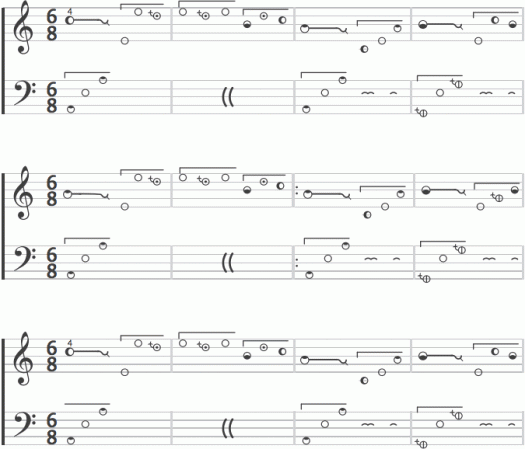
A New Way to Read Music

If you keep up on music and technology you may have noticed that bloggers have recently taken to discussing a new music-notation system called Hummingbird, depicted above. I tried to learn it. It borrows its method of displaying rhythm from piano rolls, showing us the amount of time a note should be held, like GarageBand and other music software. What’s more, it points up for sharps and down for flats, which a demanding violin teacher might do with a pencil. Aside from that, it’s deceptively complicated and requires learning different symbols. How much easier it would be for someone who has never learned music, or lacks a teacher, is questionable.
New systems (and apps) are best when they solve problems, but learning to read Western music notation isn’t a problem that requires a solution. It’s not easy. But like learning to read English, it’s eminently doable, and fraught with fewer variables and exceptions. Reading Western notation—and there have of course been many precursors to what we use now, as well as many alternatives, including Braille and an integer-based system—has also proven to be good for your brain, and we don’t need to simplify it. The current sharp and flat note symbols work fine; you just have to remember them.
Hummingbird appears to be a nicely designed dumbing-down, and not an especially noteworthy one in an age of design-fetish and how-to videos. Shortcuts—like guitar tablature—should really be shortcuts. This new system basically just makes reading music different, and it doesn’t seem to allow for new ways to notate sounds that we cannot yet notate. I’m in favor of new music technologies and notation systems, but Hummingbird should first show me why Western music notation is a problem, and why Hummingbird is a necessary alternative. For now, especially given our abundance of online music-education resources, it’s not.
For more information about alternative music notation systems that may solve what some perceive to be standard notation problems, check out The Music Notation Project.

